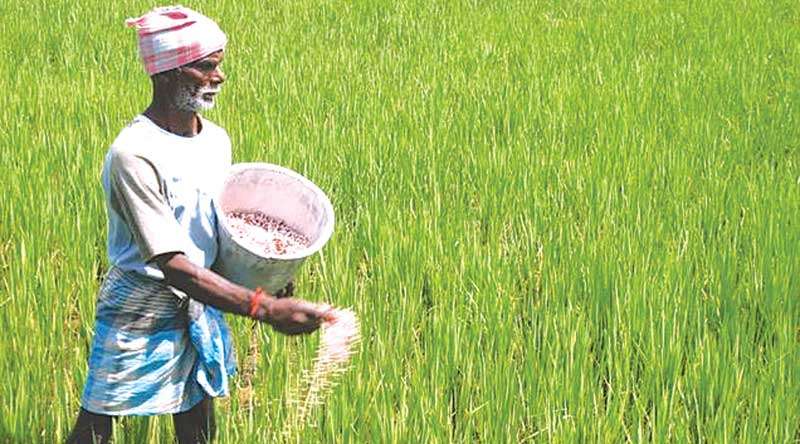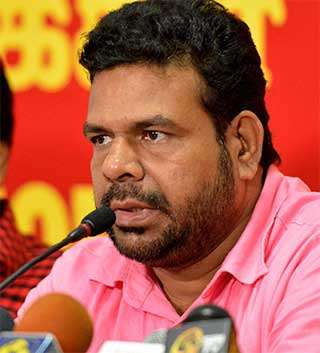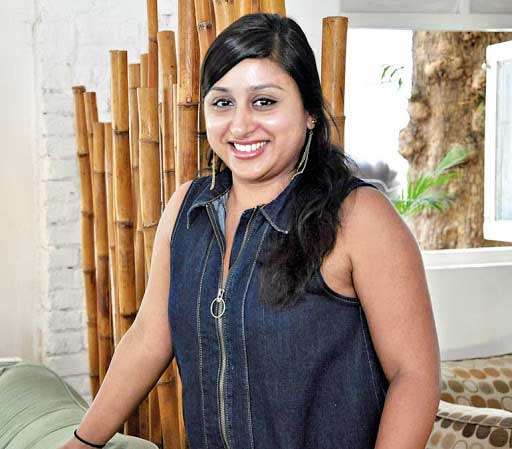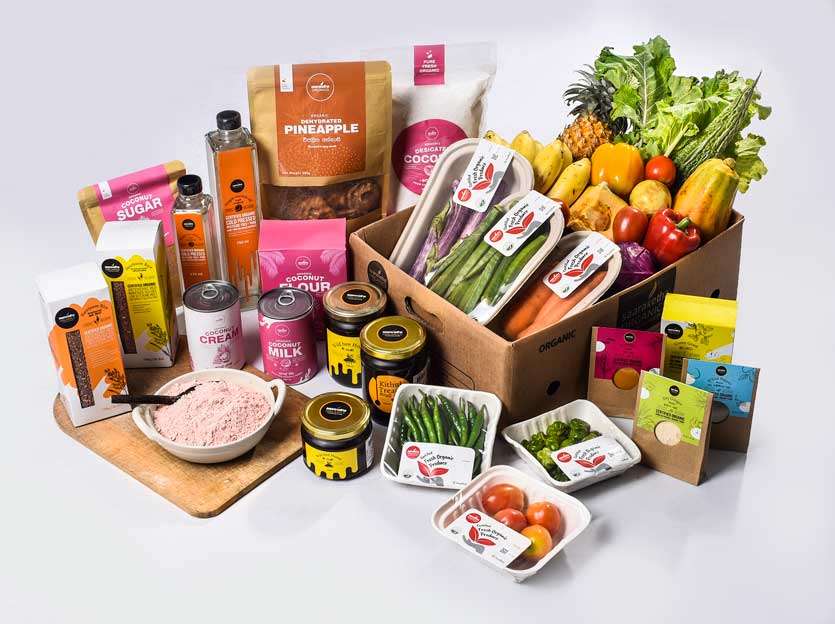
Mar 09 2020.
views 561Paddy farmers are getting ready for the Yala season which will begin in a month’s time. But they are faced with eternal challenges with regard to climatic conditions, fertilisers, cost manipulations and other external stressors. This is why the fertiliser subsidy comes in as a convenient election promise, during every election season. However the Rs. 35 billion worth fertiliser subsidy benefits only a handful of the farmer population while the greater damage caused by the usage of fertilisers is neglected in most instances. Haphazard usage of fertilisers have caused a considerable percentage of Sri Lanka’s populace to suffer from chronic kidney disease of unknown origin (CKDu) and other non-communicable diseases. Sri Lanka was also ranked as a country that has the highest consumption of chemical substances.
In this backdrop, the Daily Mirror Life takes a look at the fertiliser regulation process, why farmers should opt for natural alternatives and the challenges of going organic.

The regulation process and challenges
The National Fertiliser Secretariat (NFS) is the primary body that regulates the usage of fertilizers that are imported into the country. “We check if fertilizers include nutrients within the set parameters apart from quality assurance and price controlling,” said Kapila Dissanayake, Assistant Director at NFS. “These fertilisers need to follow the standards given by the Sri Lanka Standards Institution. Straight fertilizers include Urea, Triple Super Phosphate (TSP), Muriate of Potash (MOP) and Sulphate of Ammonia. Each of these fertilizers provide one nutrient which is required for plant growth. Apart from main nutrients such as nitrogen, phosphorus and potassium these fertilizers also provide alternative nutrients such as Calcium, Zinc and Boron as well. One of the major concerns is that 99% of fertilizers are imported from overseas. If we take phosphorus we get rock phosphate from the Eppawala Rock Phosphate mine but this could only be used for crops such as tea, rubber and coconut. Therefore, fertilizers such as TSP are chemically made in laboratories.”
Speaking about the documentation process, Dissanayake said that if a supplier wants to import a new dose of fertilizers they have to submit a manufacturer’s certificate which includes the moisture, total nitrogen and phosphorus contents etc. of the product along with an analysis certificate of the product from a laboratory in that particular country. “If the parameters lie within the range they will be sent for commercial use. If not, the samples will be sent for retesting. If at least one of the nutrients are out of range, we don’t recommend them to distribute the product for commercial use. They will have to change their labels and mention the amount of the particular nutrient and may use it for their purposes.”
The heavy metal content in fertilizers have become a direct contributor for non-communicable diseases in the country. The prevailing kidney disease issue in the North Western province and other agriculture-dominated cities is a clear example. “In every fertiliser sample, the presence of five heavy metals including Arsenic, Cadmium, Chromium, Mercury and Lead are being checked. Heavy metals should always be below the minimum limits that we hav given and these parameters change from fertiliser to fertiliser,” he added.
For example, the limits for potentially toxic elements of TSP fertilizer are as follows :
|
Element |
Limit (PPM) |
|
Arsenic |
25 |
|
Cadmium |
3.0 |
|
Lead |
30 |
|
Chromium |
50 |
|
Mercury |
1 |
When asked why local manufacturing capacity is limited, Dissanayake said that there’s a lack of resources to produce fertilisers. “For example, in order to produce urea you need methane. But in countries such as Oman and Qatar there are oil springs and methane is produced as a by product. So they can easily produce urea. If you take MOP, it is a mining product. Therefore our production capacity is limited.”
Sri Lanka imports fertilisers from countries such as Spain, Germany, England, Russia, Oman, Qatar and China. Some products are also brought down from India as well. “We are also keeping a close watch on adulterated products that are being forced into the market by countries such as China. They make duplicate products and those are being exported to other countries. However those fertilisers have proven a low yield or no effect on the crops.”
Speaking about the issue of subsidies, Dissanayake further said that fertilisers such as Urea, TSP and MOP are given as subsidies. “For the next Yala season we have been asked to provide subsidies free of charge for paddy farmers. Then we calculate the fertilisers required for the particular land area and the procurement is done by the Ministry of Agriculture. Then the NFS decides the quantity with crop cycles and through the Treasury, a technical evaluation committee is appointed to decide on the price. He however observed several challenges in controlling the usage and distribution of fertilisers due to various political influences. The current estimate for the agriculture subsidy is Rs. 35 billion but this could have been reduced if local manufacturing was encouraged as a huge amount of money is paid to suppliers from overseas.”
Speaking on the use of organic fertilisers, Dissanayake further said that organic fertilisers are currently being tested at the Makandura Agriculture Research Centre and farmers should be registered at the Agriculture Department. “Currently we are in the process of drafting the standards and parameters.”
Opt for natural alternatives
“With the prevailing heat, farmers are facing challenges to sustain their crops,” opined Namal Karunaratne, National Organiser for All Ceylon Farmers’ Federation. “Many water bodies have dried out. They didn’t receive the fertiliser subsidy during the rainy season and now they can’t rear crops even if they have fertilisers. We should look at a way to store water in natural water bodies. Water from the central highlands should flow to the rivers but when buffer zones are damaged, water dries out rapidly. Another issue is the problem of tube wells. They dig deeper into the ground and disturb natural springs. Even activities such as sand mining encourage flooding because there’s no way that the banks could retain excess water because they have sunk. Apart from relying on fertilisers, people should also opt for natural alternatives if they want to sustain their plantations but human activities have caused a drastic reduction in natural resources we would have otherwise had.”

Going organic : Strengthening the maintenance and cost relationship
The usage of commercial fertilisers and harmful impacts on health has provided space for organic products to penetrate the market. But two major concerns are the price factor and quantity. “The only way we can ensure that genuine products reach the market is through certification and diligent monitoring of our farms,” said Charitha Abeyrathne, Founder and CEO at Saaraketha Organics, Sri Lanka’s biggest retailer and importer of fresh, certified organic produce. “Farms that grow Certified organic produce are tested by international third party certifiers every year. They test soil and plant matter, which shows any traces of chemicals spanning back to three years. This is the only was to ensure that farmers are chemical free but it is also an expensive and difficult process. Saaraketha has also introduced our certification "Saaraketha Guarantee" . This is a step to encourage smallholder farmers to embrace organic methods of cultivation. This is another inexpensive method to encourage those who are beginning their journey of transition to be certified organic producers; this is a process where internal Saaraketha compliance auditors inspect farms, implement guidelines to ensure the compliance standards required for certification are in place and prepare farmers and farms for subsequent third party certification. The Saaraketha Organic standards are based on the International Federation of Organic Agriculture Movements (IFOAM) Norms for Organic Production and Processing.”

When asked about the cost factor, Charitha further said that its expensive because maintaining organic integrity is a challenging process. “It therefore requiresmanual labour, more processes, more paperwork, and most of all testing and international certification costs. To test if a product is truly organic you need to send the product and soil samples to testing laboratories in Europe and this incurs a high price; but it has to be done, if you want to be sure that what you are selling is indeed organic. At Saaraketha we do this every year! Many people take shortcuts and that is why certain products labeled organic can still come into the market at cheaper prices. With more consumers asking for credibly certified products, the prices can come down. At Saaraketha we are always striving to bring down our prices as we believe that good, healthy, clean and fair food is a fundamental right of every human.Through Saaraketha Guarantee we bring more economical productswith a guarantee that they are completely chemical free. “

Saaraketha works with local farmers and have empowered them over the years.“We work with farmer clusters and proprietary farmers who follow global organic standards. We reward these farmers with better prices. We feel it's important to empower the farmers economically and give them the tools and technical knowhow to do what they are doing better. This way, we can ensure sustainability among our farming networks.”
She further said that Saaraketha Organics introduced a convenient, blockchain enabled traceability platform called "Tracified" through which Saaraketha and customers can now track the social, environmental and economic impact of each product purchased. With a scan of a QR code on a Saaraketha product pack, you can trace back where your product came from, who grew it and how your purchase is supporting the farmers that grow your food. This is a real "farm to table" experience.”
0 Comments